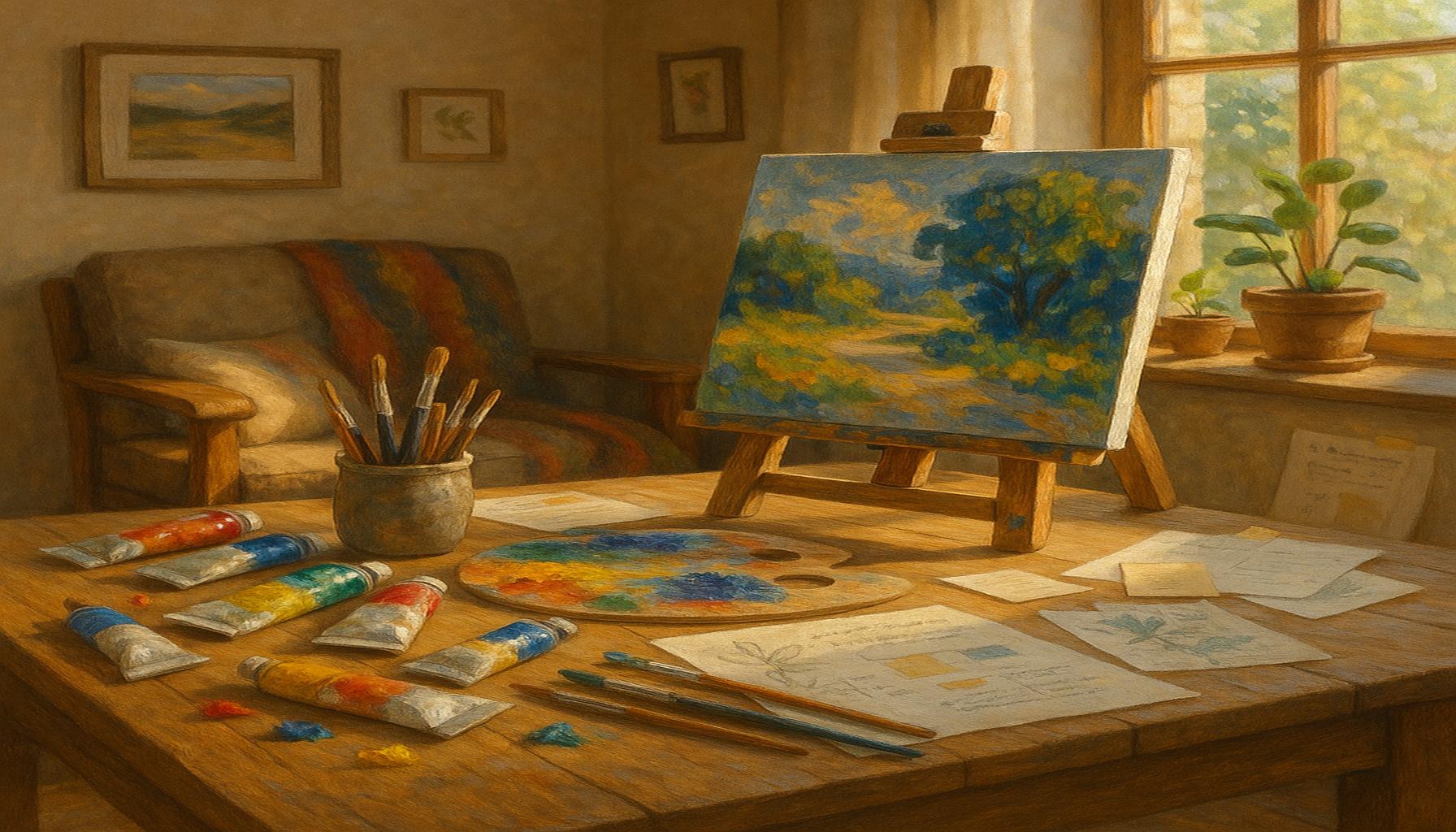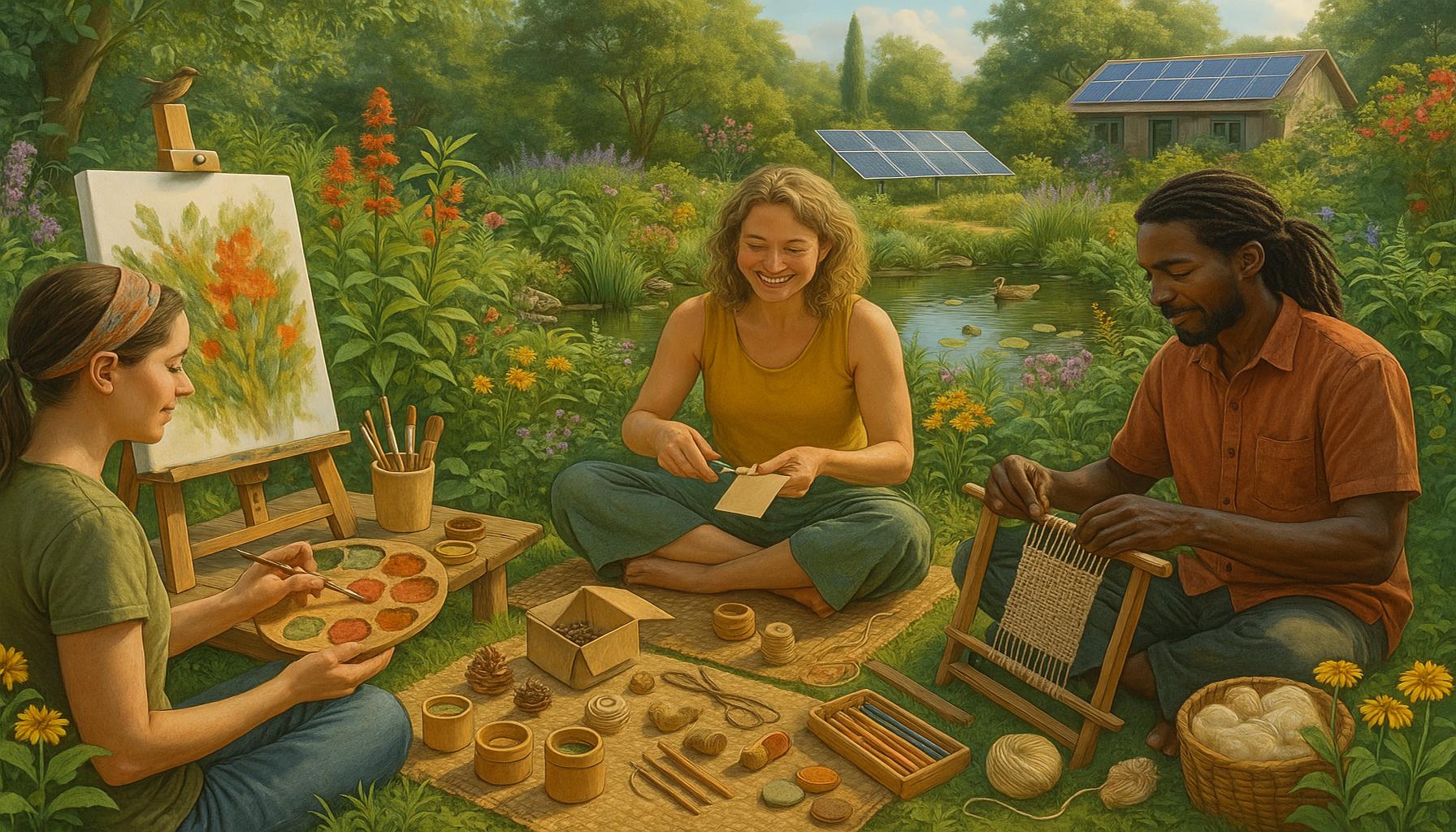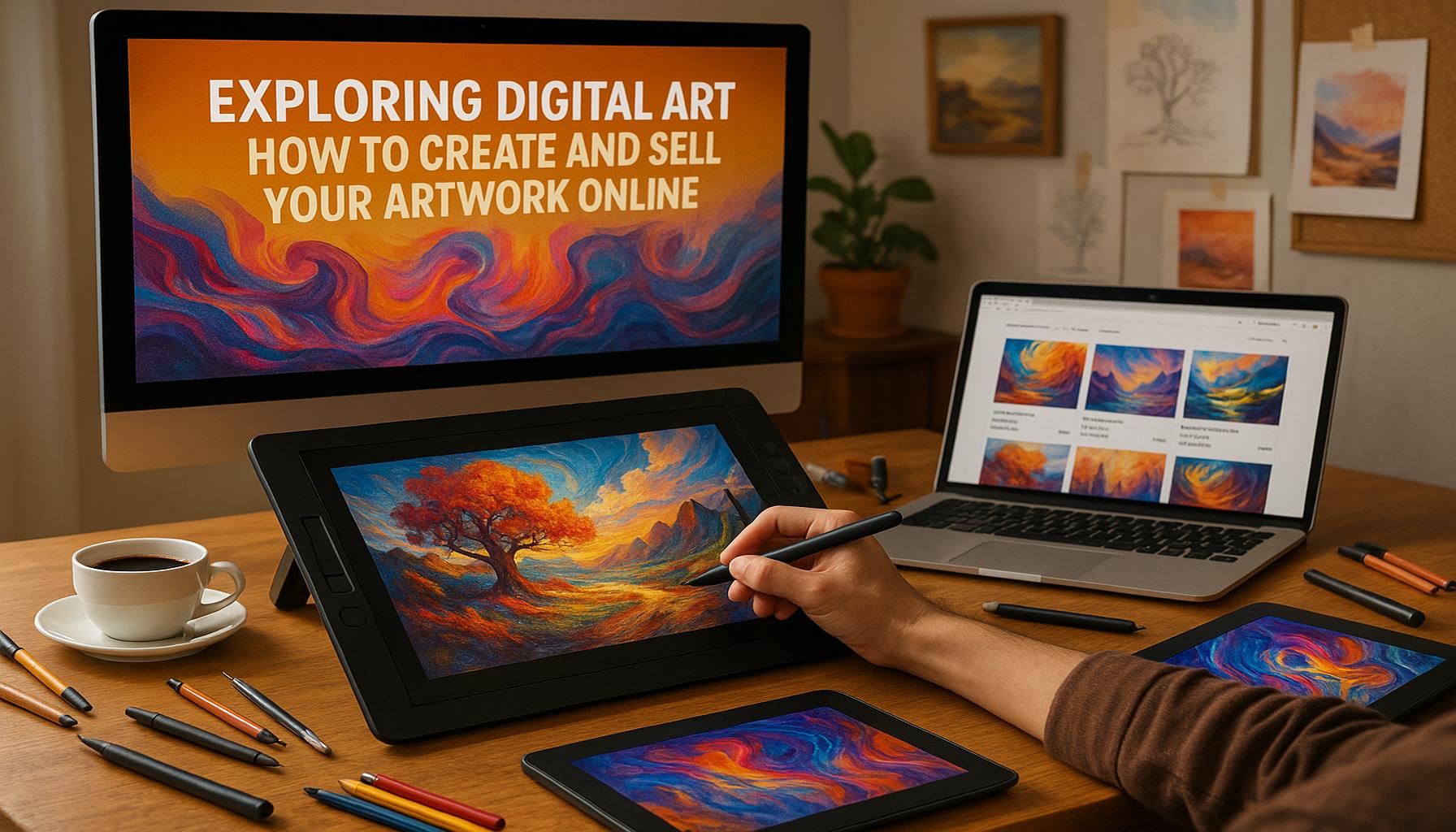Art as a form of activism: how creative hobbies can be used to promote social causes
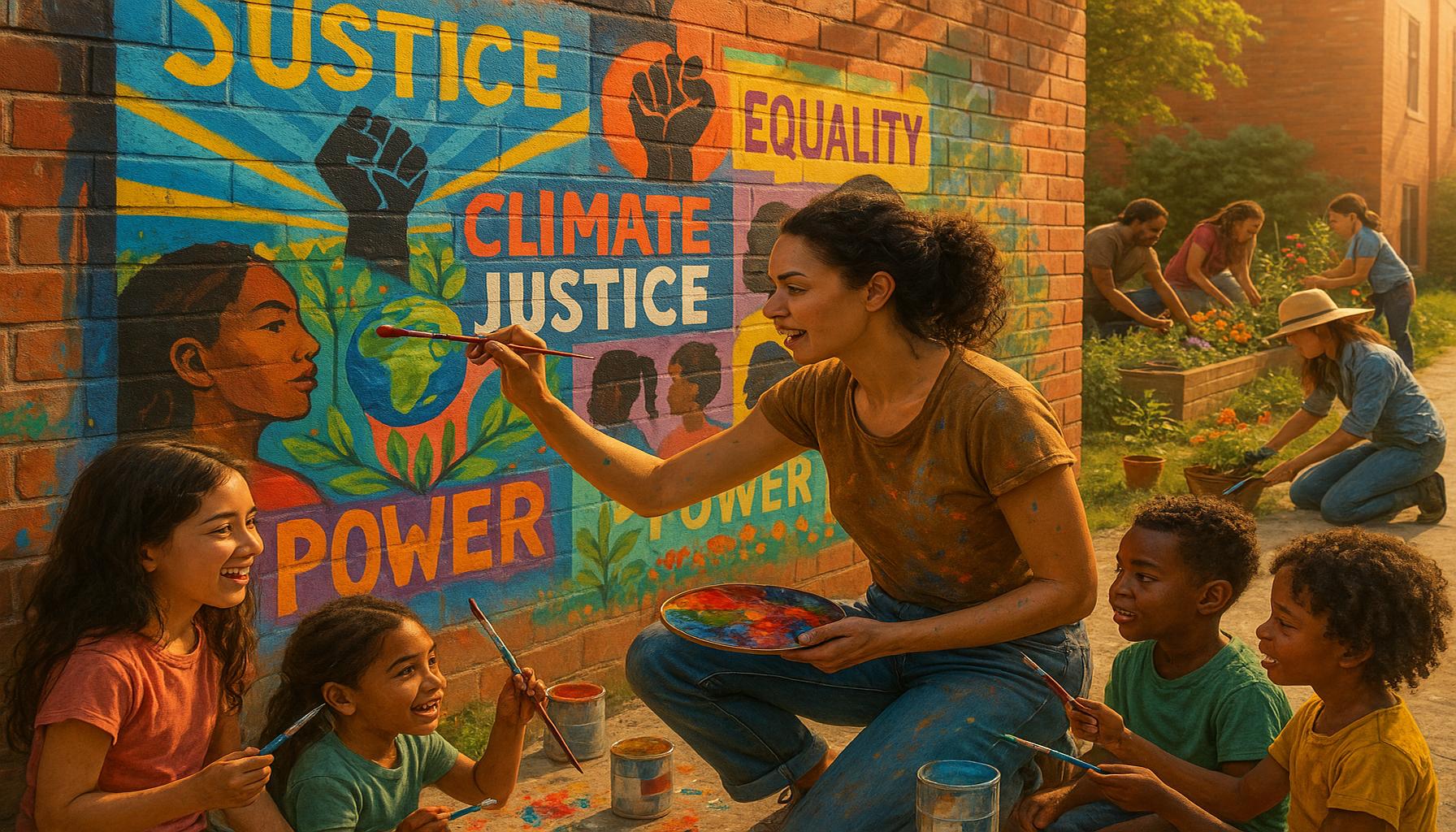
Harnessing the Power of Artistic Expression in Social Movements
As society navigates turbulent times marked by social unrest and the urgency of environmental issues, art has emerged as a transformative instrument for activism. Artists are not just observers of the societal landscape; they actively contribute to cultural discourse by utilizing their creative hobbies—whether painting, poetry, or music—to convey potent messages and mobilize communities for change. These artistic expressions act as a bridge, connecting the public with critical social issues in a compelling and accessible manner.
Different artistic forms play unique roles in stirring social consciousness. For instance, in the realm of Visual Arts, murals and installations provide striking imagery that captures attention and provokes thought. The works of renowned artists like Shepard Fairey, who created the iconic “Hope” poster for Barack Obama’s campaign, illustrate how visual arts can significantly impact political movements and inspire collective action. Similarly, street art, often seen as a form of public dialogue, erupted during protests, effectively amplifying the voices of marginalized communities.
In the field of Literature, powerful narratives in poetry, novels, and essays can ignite discussions on essential topics such as race, gender, and inequality. Writers like Amanda Gorman, whose inaugural poem captivated millions, demonstrate how the written word can inspire hope and foster change. Her work encourages readers to consider their roles in society and challenge the status quo.
Moreover, the Performing Arts—encompassing theater, dance, and music—serve as dynamic platforms for challenging perceptions and inspiring audiences. The “Theater of the Oppressed,” founded by Augusto Boal, is a notable example where performance becomes a means to engage audiences in exploring social issues. Productions can evoke empathy and prompt viewers to act towards real-world change.
Artistic avenues not only stimulate community engagement but also galvanize collective support for pressing causes. An illuminating example is how street art flourished during the Black Lives Matter movement, often depicting powerful symbols and messages that nourished dialogue on equality and justice. In a similar vein, local artists frequently convey the urgency of climate change through art exhibits and public spaces, inviting audiences to reflect and inspire a more sustainable approach to living.
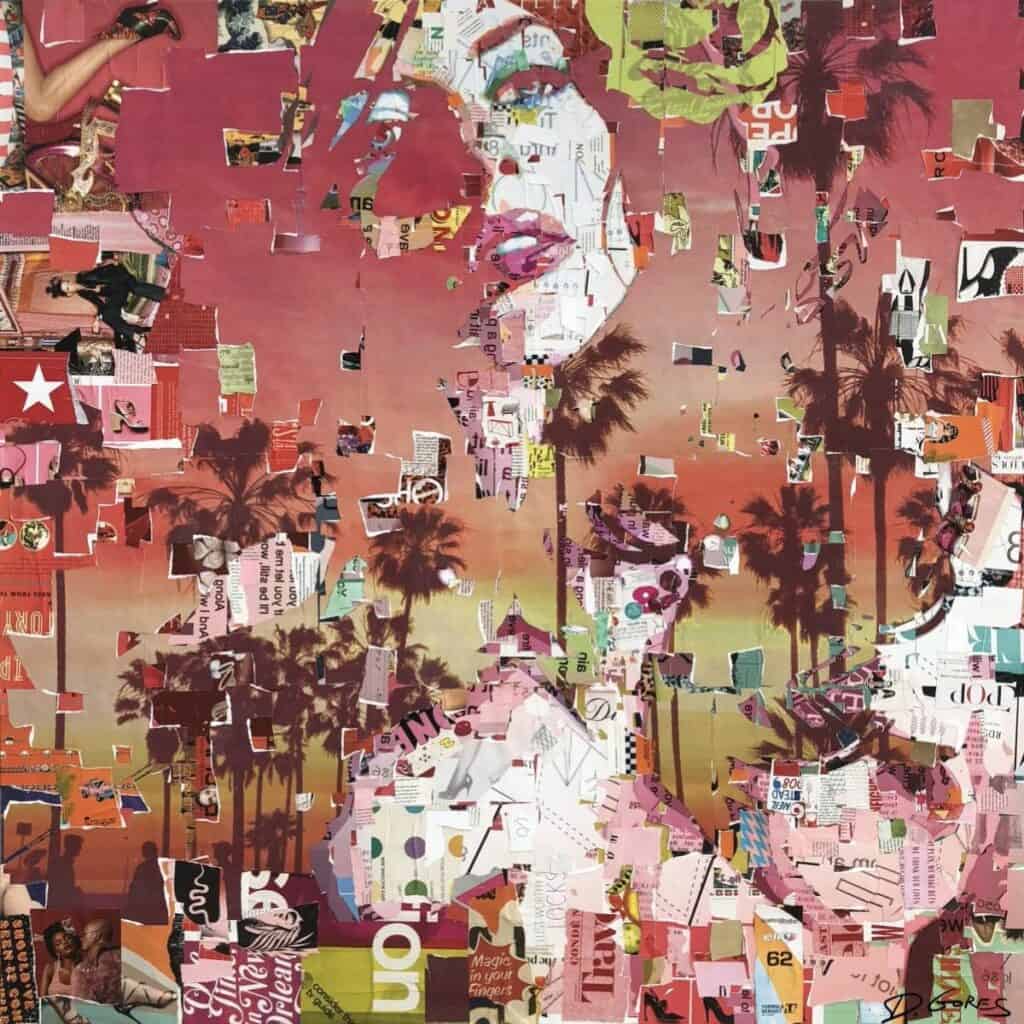
As we further explore the intersection of creativity and activism, it is crucial to understand the substantial impact that art can wield in the quest for social change. Art’s unique capacity to distill complex issues into meaningful visual or auditory experiences makes it an invaluable ally in advocacy efforts. Thus, we invite you to join us in discovering the profound potential of creativity as a catalyst for activism across diverse social landscapes.
DIVE DEEPER: Click here to discover the DIY revolution
A Spectrum of Artistic Mediums Empowering Social Change
Within the vast landscape of artistic expression, various mediums have emerged as powerful vehicles for promoting activism. From visual arts to literature, each form offers unique capabilities to engage audiences and provoke thought, making them integral to contemporary social movements. Through the lens of creativity, social issues can be transformed into compelling narratives that resonate with a wide and diverse audience.
Visual Arts: The Canvas of Social Commentary
The realm of visual arts encompasses materials and techniques ranging from painting to digital media. Artists leverage their works as social commentary, often touching upon sensitive subjects. Murals, for instance, serve as visually arresting public statements that invite passersby to confront issues such as racism, gender equality, and climate change. Notable examples include the expansive murals in cities like Los Angeles and New York, where local artists collaborate to depict historical events or highlight community struggles, transforming public spaces into galleries that speak volumes.
- Installation Art: These immersive experiences are designed to evoke emotional responses by engaging multiple senses, prompting viewers to reflect on societal challenges.
- Street Art: This rebellious form of expression often takes a political stance, making bold statements in the heart of cities; artists like Banksy have revolutionized public art, raising awareness of societal issues globally.
Literature: Words that Inspire Change
Transitioning to the world of literature, the written word has historically played a critical role in influencing public opinion and sparking movements. From novels that address inequality to poetry that reflects shared human experiences, literature can illuminate societal struggles and motivate collective action. The works of authors like Toni Morrison and James Baldwin not only narrate the African American experience but also challenge cultural narratives and empower readers to analyze their surroundings critically.
Performing Arts: Bringing Issues to Life
The performing arts, including theater, music, and dance, provide a dynamic canvas for storytelling and advocacy. Performances often encourage audience participation, serving as a medium to engage in conversations surrounding activism. For example, the musical “Hamilton” breathes new life into American history by tapping into themes of immigration and equality, making the narrative relevant to younger generations and challenging traditional perspectives.
Furthermore, concerts and theater productions frequently address pressing themes, from climate justice to LGBTQ+ rights, allowing artists to advocate for change through their performances. This melding of art and activism fosters an environment where audiences are not just passive observers but active participants in dialogues that matter. As the lines between creativity and activism blur, it becomes increasingly clear that art is not merely a form of expression but an essential tool for advancing social causes.
In unraveling the transformative power of artistic mediums, it becomes evident that creativity embodies more than personal fulfillment; it serves as a rallying cry for justice, equity, and awareness. As we delve deeper into this exploration of the intersection between art and activism, it is crucial to acknowledge how each creative endeavor contributes to fostering social change in multifaceted ways.
Creative Hobbies as a Catalyst for Change
Art has long served as a powerful tool for activism, transcending borders and uniting diverse voices around pressing social issues. Creative hobbies, whether painting, photography, or music, provide a medium through which individuals can express their passions and beliefs. They allow for personal interpretation of societal challenges, encouraging discussions and inspiring action. The intersection of creativity and activism is evident in projects like community murals or public performances, where artists collaborate to raise awareness about issues such as climate change, racial justice, and mental health.One remarkable example is the use of street art to highlight social injustices. Artists like Banksy and Murals for Change leverage public spaces to create provocative imagery that confronts viewers with uncomfortable truths. This not only beautifies urban environments but also invites conversations around difficult topics. When individuals engage in artistic expressions related to social issues, they take ownership of their narratives, fostering a sense of empowerment and community solidarity.Moreover, educational workshops in creative fields promote social responsibility and inspire participants to reflect on their roles within their communities. By teaching skills like photography for social documentation or theater for community engagement, participants learn that their voices matter. These activities provide participants with tools to engage proactively, making art not just a product but also a process for social change.The digital age has further amplified the reach of creative activism. Platforms like Instagram and TikTok enable artists to share their messages with a global audience, drawing attention to causes that might otherwise go unnoticed. Similarly, crowdfunding campaigns for artistic initiatives can mobilize resources and raise funds for impactful community projects, proving that art is not only a personal endeavor but also a collective movement towards positive change.In exploring the profound impact of combining creative hobbies with activism, we uncover a vibrant tapestry of voices, experiences, and movements that continuously push for a more equitable society. This dynamic interaction between art and activism fosters resilience and innovation, allowing individuals to engage meaningfully with the world around them. Exploring these connections through artistic practices encourages a deeper understanding of social issues and a commitment to acting upon them, ultimately enriching both the personal and collective journey toward justice and equality.
| Advantages of Creative Activism | Impact on Society |
|---|---|
| Empowers individuals through creative expression | Encourages critical dialogues on social issues |
| Builds community and connects diverse groups | Fosters solidarity and shared purpose in activism |
DIVE DEEPER: Click here to discover sustainable craft trends
Art in the Digital Age: Navigating Social Media for Activism
In today’s world, the digital landscape has become a revolutionary platform for artists and activists alike. Social media platforms such as Instagram, TikTok, and Twitter have democratized the release of art and activism, granting individuals from varied backgrounds a space to share their perspectives, experiences, and creative works. The visual nature of these platforms makes them especially powerful in amplifying messages that might otherwise go unheard.
Digital Art and Graphic Design: Visual Voices
With tools like Adobe Creative Suite and Procreate, artists are harnessing the power of graphic design to create impactful visuals that advocate for social justice. Infographics detailing data on police violence or climate change can spread rapidly, increasing awareness and prompting discussions that lead to action. For instance, the online campaign “#BlackLivesMatter” is enhanced by visual elements like bold graphics and poignant imagery, which evoke emotional responses and foster solidarity within communities.
- Memes: This contemporary form of digital storytelling allows for clever, humorous, or poignant expressions of social and political commentary. They can quickly go viral, reaching audiences who may not engage with traditional forms of activism.
- Video Content: Platforms like YouTube and TikTok enable artists to use performance art, spoken word poetry, and informative videos to promote causes, catering to younger, tech-savvy audiences.
Community Engagement: Connecting Through Collaboration
Art as activism is not solely an individual endeavor; it thrives within community engagement. Collaborative art projects, workshops, and exhibitions can bring people together, fostering dialogue around pressing social issues. Organizations like Art for Change connect artists with communities facing social challenges, encouraging collective expression through collaborative murals or installations. These projects not only beautify neighborhoods but also create a sense of ownership and pride among residents; they transform art into a shared responsibility for social advocacy.
Furthermore, initiatives such as pop-up galleries and activist fairs allow artists and activists to converge in public spaces, creating dialogue and accessibility to art. The arts act as a bridge to connect individuals with different backgrounds and ideologies, thereby enriching the discourse surrounding social issues.
The Role of Art Education in Activism
Education plays a crucial role in amplifying the effects of art as a form of activism. Programs that focus on arts education in schools and communities can empower future generations to express their concerns through creative mediums. Creative writing courses or art workshops centered around themes of identity and social justice equip young people with the tools they need to articulate their thoughts and feelings, inspiring future movements.
Moreover, initiatives like “Artivism,” which blend art and activism, encourage participants to explore the intersection of creativity and social justice. By offering resources and mentorship, these programs elevate underrepresented voices and provide a platform for meaningful change. As more individuals engage with art as a form of activism, the potential for vibrant, impactful movements continues to grow.
Through exploring the connections between art and technology, community collaboration, and education, we unlock a multi-dimensional approach to activism that speaks to the heart of societal challenges. By embracing art in its many forms, activists can inspire a social consciousness that transcends traditional communication boundaries, fostering a culture that empowers individuals to advocate for change.
DISCOVER MORE: Click here to learn about relaxation crafting techniques
Conclusion: Embracing Art as a Catalyst for Change
In a world often marked by social inequities and pressing challenges, art as a form of activism has emerged as a critical tool for promoting social causes and sparking meaningful transformations. The ability of creative hobbies—whether visual art, music, dance, or written expression—to convey poignant messages and elicit emotional responses is unparalleled. As we have seen, the rise of digital platforms has enhanced the reach of art, enabling artists to connect across geographical boundaries and share their narratives with a global audience.
Moreover, the power of community engagement demonstrates that collective creation fosters a deeper sense of belonging and responsibility. Initiatives that bring people together not only beautify spaces but empower communities to voice their concerns and advocate for change. Equally important is the role of arts education, which nurtures young talent and emboldens future generations to challenge norms through creative expression.
As art continues to intersect with activism, we find inspiring examples of how social movements thrive and evolve, leveraging creativity to engage diverse audiences. By embracing and supporting art in its myriad forms, individuals can cultivate a culture of empathy, awareness, and solidarity that transcends traditional activism. Ultimately, art as activism is not just about creating—it is about igniting conversations and inspiring action that propel societies toward a more just and equitable future. As artists and advocates unite, we propel ourselves closer to a world where beauty and justice go hand in hand.
